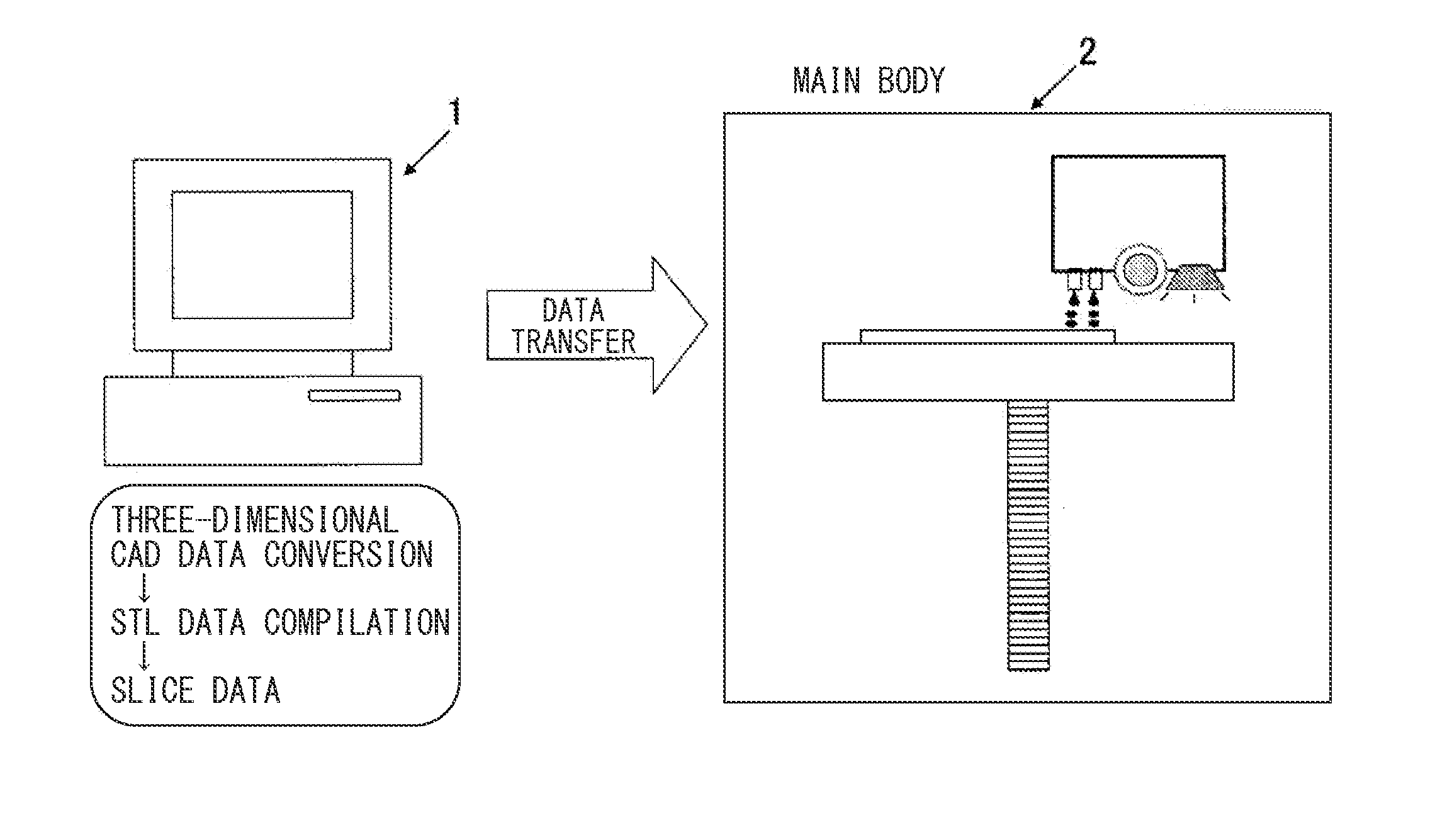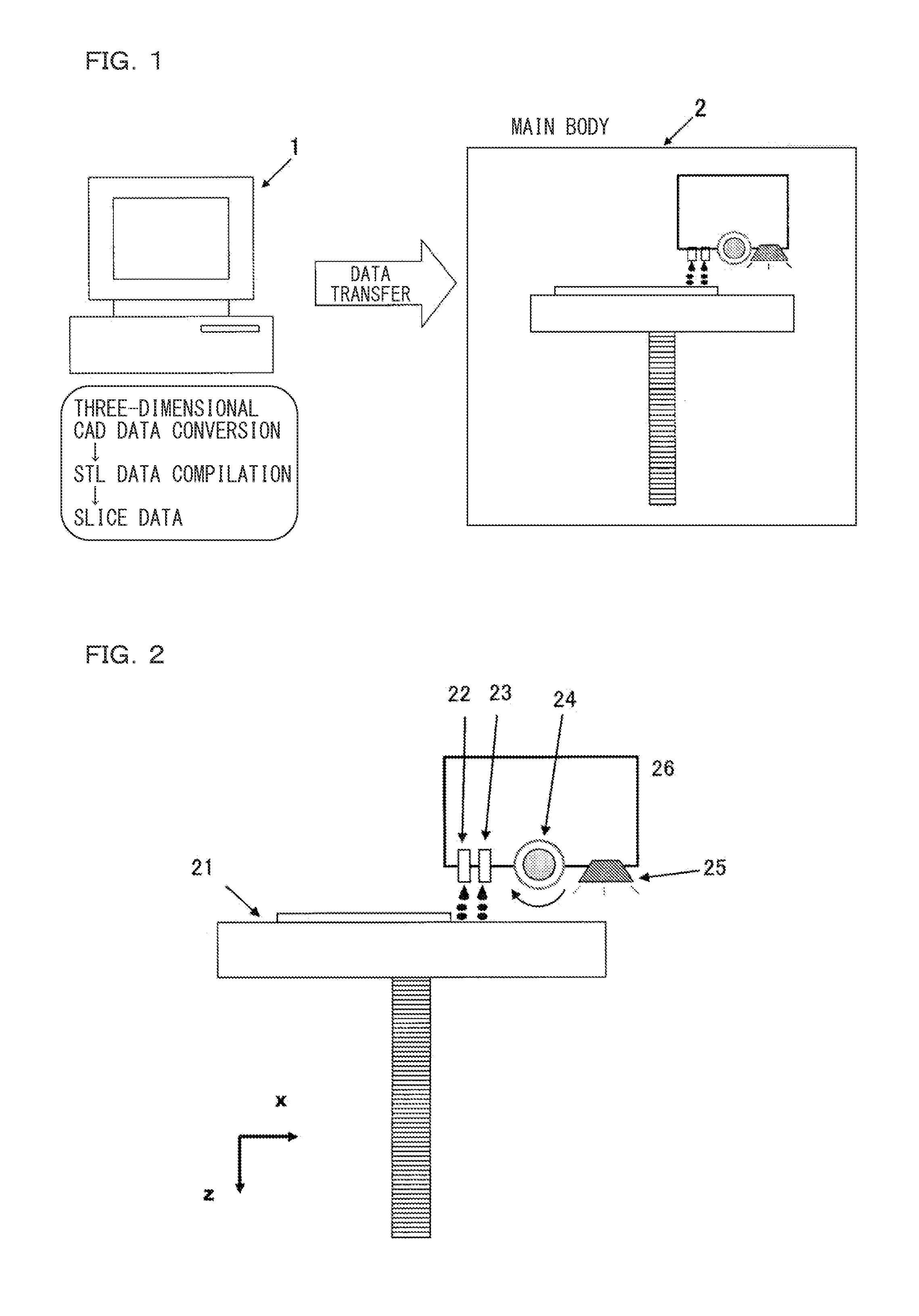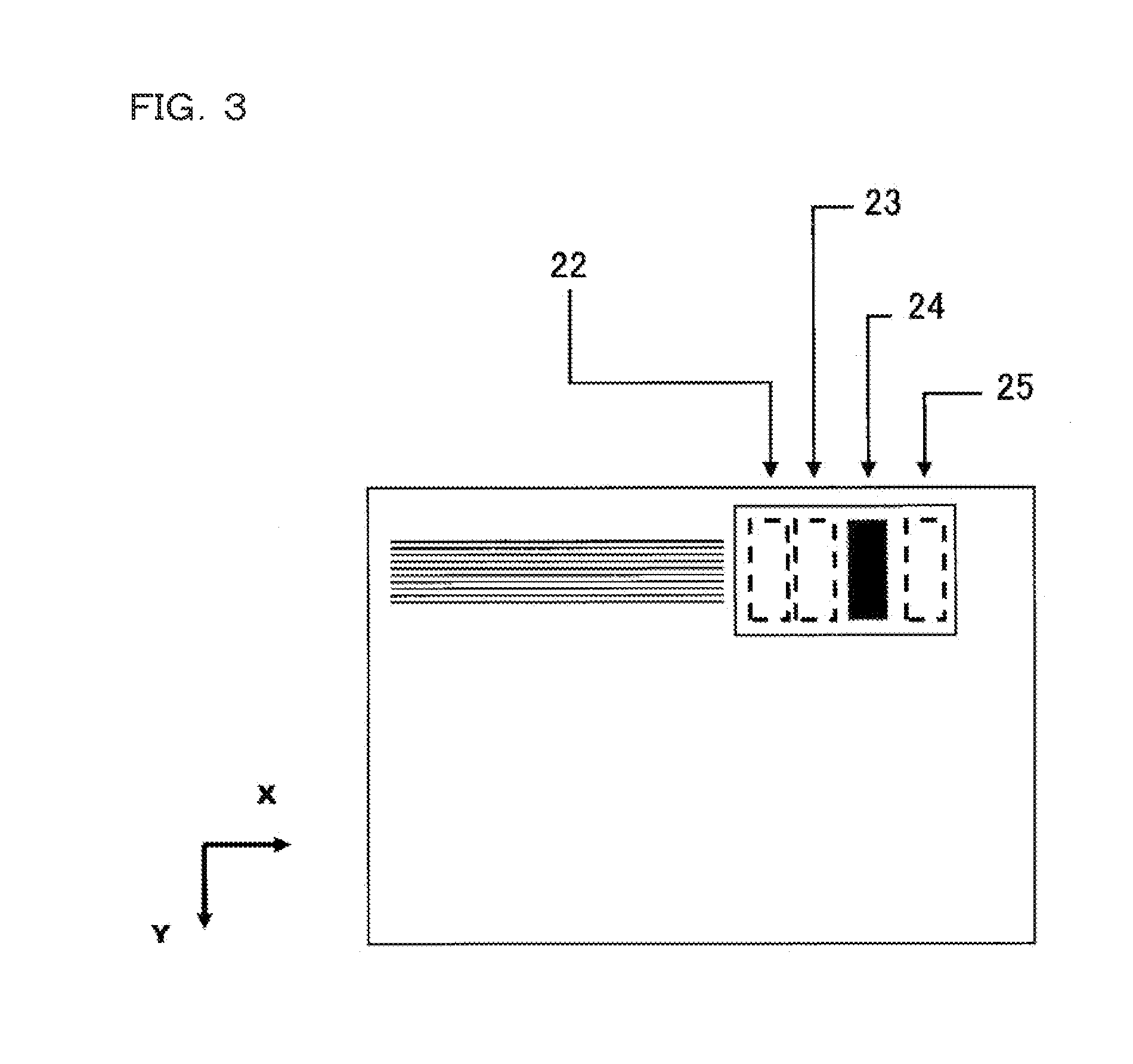Modeling Material For Forming Photofabrication Model In Ink-Jet Three Dimensional Printing, Supporting Material For Supporting The Shape Of Photofabrication Model On Photofabrication And Production Method Of Photofabrication Model
a technology of inkjet three dimensional printing and model material, which is applied in the direction of 3d object support structure, ink, disinfection, etc., can solve the problems of inability to maintain working accuracy, difficult to remove supporting material, and high equipment cost, and achieves easy removal of product, easy to remove product, and low swelling deformation of modeling material.
- Summary
- Abstract
- Description
- Claims
- Application Information
AI Technical Summary
Benefits of technology
Problems solved by technology
Method used
Image
Examples
production example 1
[0105]In a reaction vessel were placed 100 parts of a caprolactone adduct of 2-hydroxyethyl acrylate [trade name “Placcel FA-4D”, available from Daicel Chemical Industries, Ltd, number of moles added: 4], 64 parts of a nurate of IPDI [trade name “VESTANAT T1890”, available from Degussa Japan Co., Ltd.], and 0.03 parts of a urethanization catalyst [bismuth tris(2-ethylhexanoate) (a 50% 2-ethylhexanoic acid solution); the same holds true for description below], and allowed to undergo a reaction for 12 hours at 80° C. to give urethane acrylate (C-1). The Mn of (C-1) was 1,730.
production example 2
[0106]In a reaction vessel were placed 100 parts of polytetramethylene glycol [trade name “PTMG-1000”, available from Mitsubishi Chemical Corporation, Mn 1,000], 33.3 parts of IPDI and 0.05 parts of a urethanization catalyst, and allowed to undergo a reaction for 4 hours at 80° C., after which 11.6 parts of 2-hydroxyethyl acrylate (NCO / OH equivalent ratio=1 / 1) was added and allowed to undergo a reaction for 8 hours at 80° C. to give urethane acrylate (C-2). The Mn of (C-2) was 1,606.
production example 3
[0107]In a reaction vessel equipped with a stirrer were placed 28.59 parts of TDI, 0.021 parts of 2,6-di-tert-butyl-p-cresol, 0.072 parts of dibutyltin dilaurate and 0.007 parts of phenothiazine and cooled with ice until the liquid temperature became 10° C. or lower with stirring. To the mixture, 26450 parts of oxypropylene glycol with a number-average molecular weight of 1000 was added and allowed to undergo a reaction with stirring for 2 hours while controlling the liquid temperature so as to become 35° C. or lower. Next, to the mixture, 9.70 parts of 2-hydroxypropyl acrylate was added dropwise and 24.74 parts of hydroxyethyl acrylate was further added dropwise. The stirring was continued for 3 hours at a liquid temperature of 70 to 75° C. and the reaction was discontinued at the point of time at which the residual isocyanate group concentration became 0.1% or less to give urethane acrylate “UA-1”. (the method of [Synthesis Example 1: Synthesis of Urethane acrylate (B)] described ...
PUM
| Property | Measurement | Unit |
|---|---|---|
| glass transition point | aaaaa | aaaaa |
| temperature | aaaaa | aaaaa |
| Tg | aaaaa | aaaaa |
Abstract
Description
Claims
Application Information
 Login to View More
Login to View More - R&D
- Intellectual Property
- Life Sciences
- Materials
- Tech Scout
- Unparalleled Data Quality
- Higher Quality Content
- 60% Fewer Hallucinations
Browse by: Latest US Patents, China's latest patents, Technical Efficacy Thesaurus, Application Domain, Technology Topic, Popular Technical Reports.
© 2025 PatSnap. All rights reserved.Legal|Privacy policy|Modern Slavery Act Transparency Statement|Sitemap|About US| Contact US: help@patsnap.com



